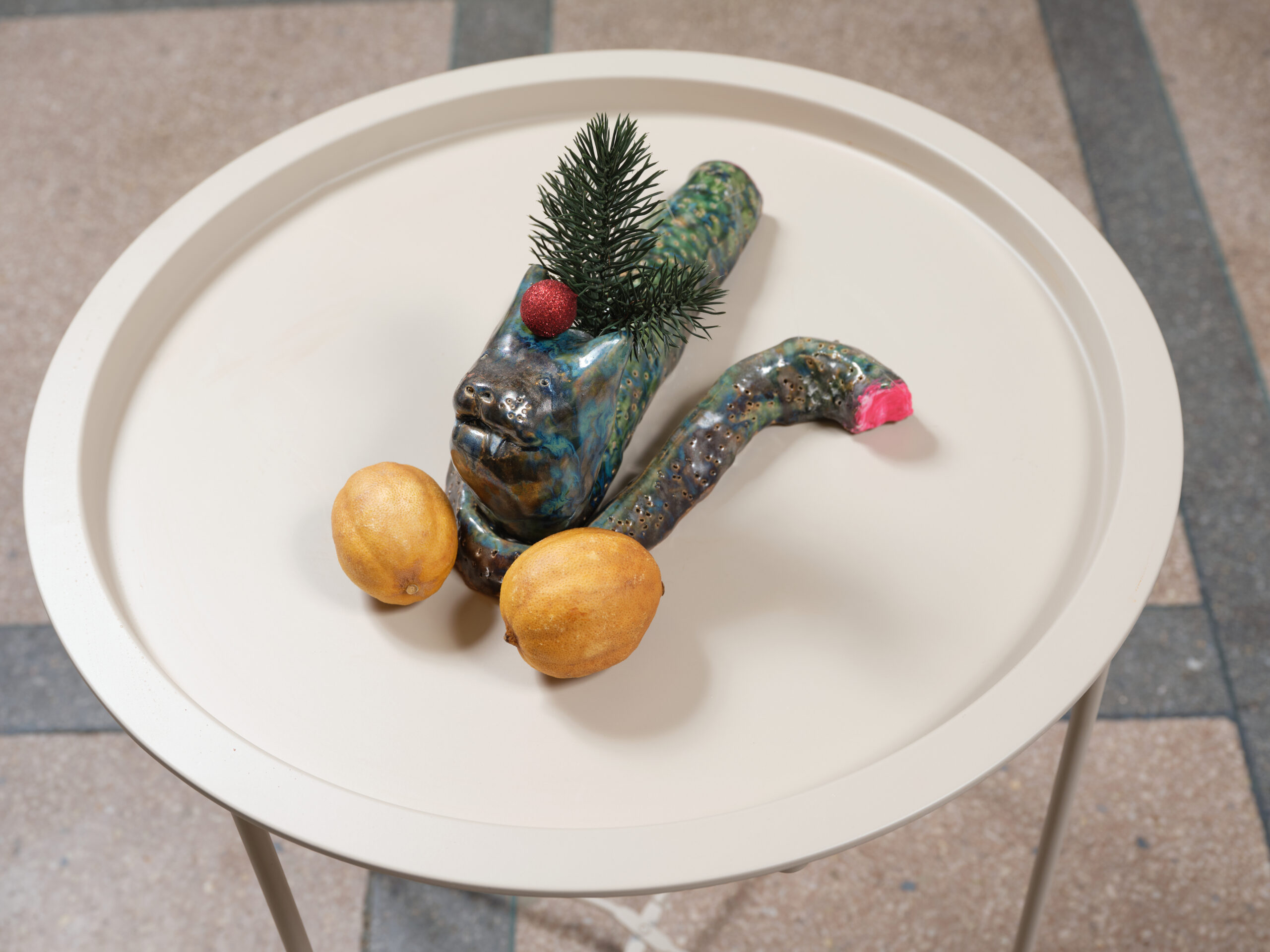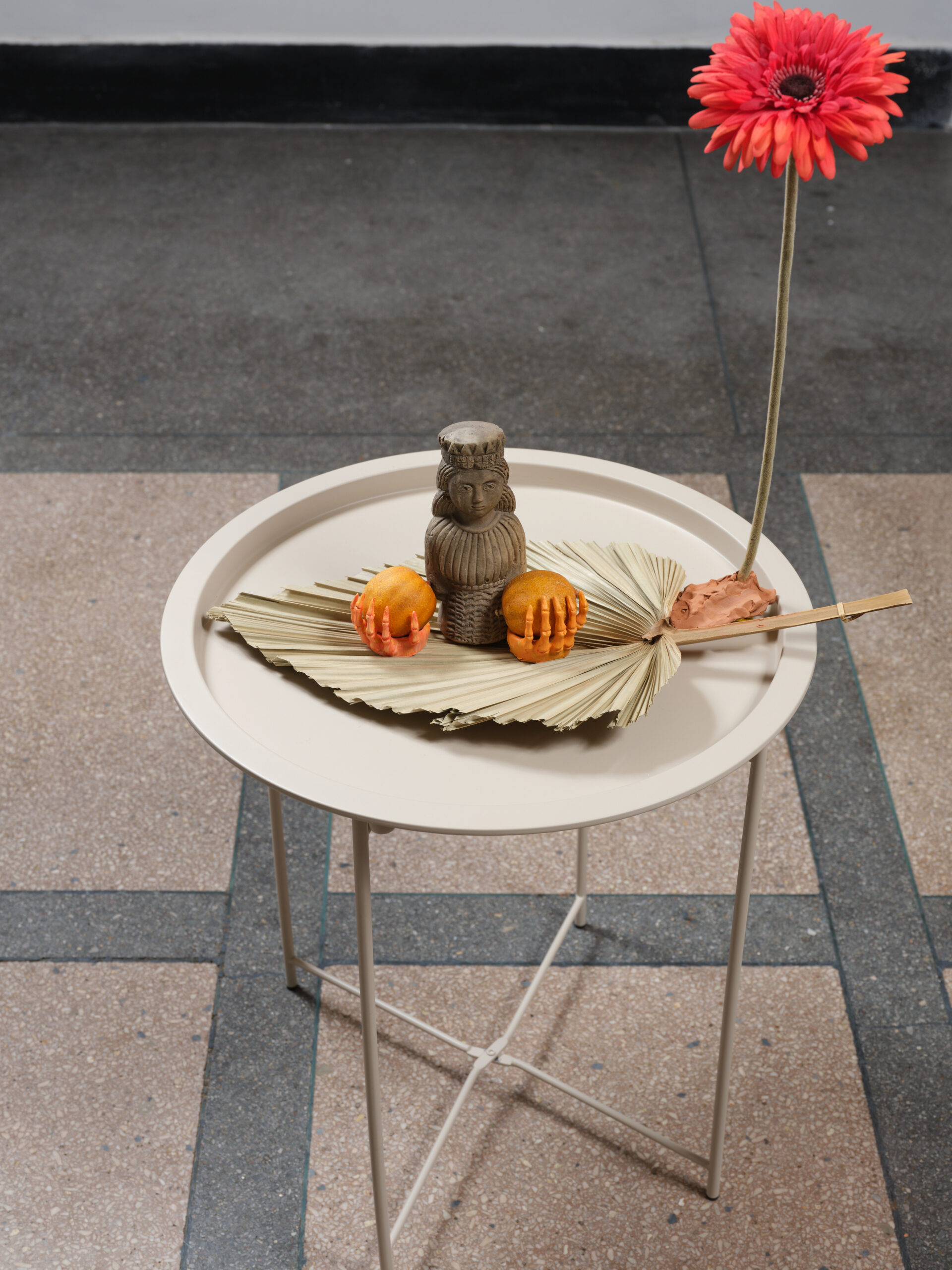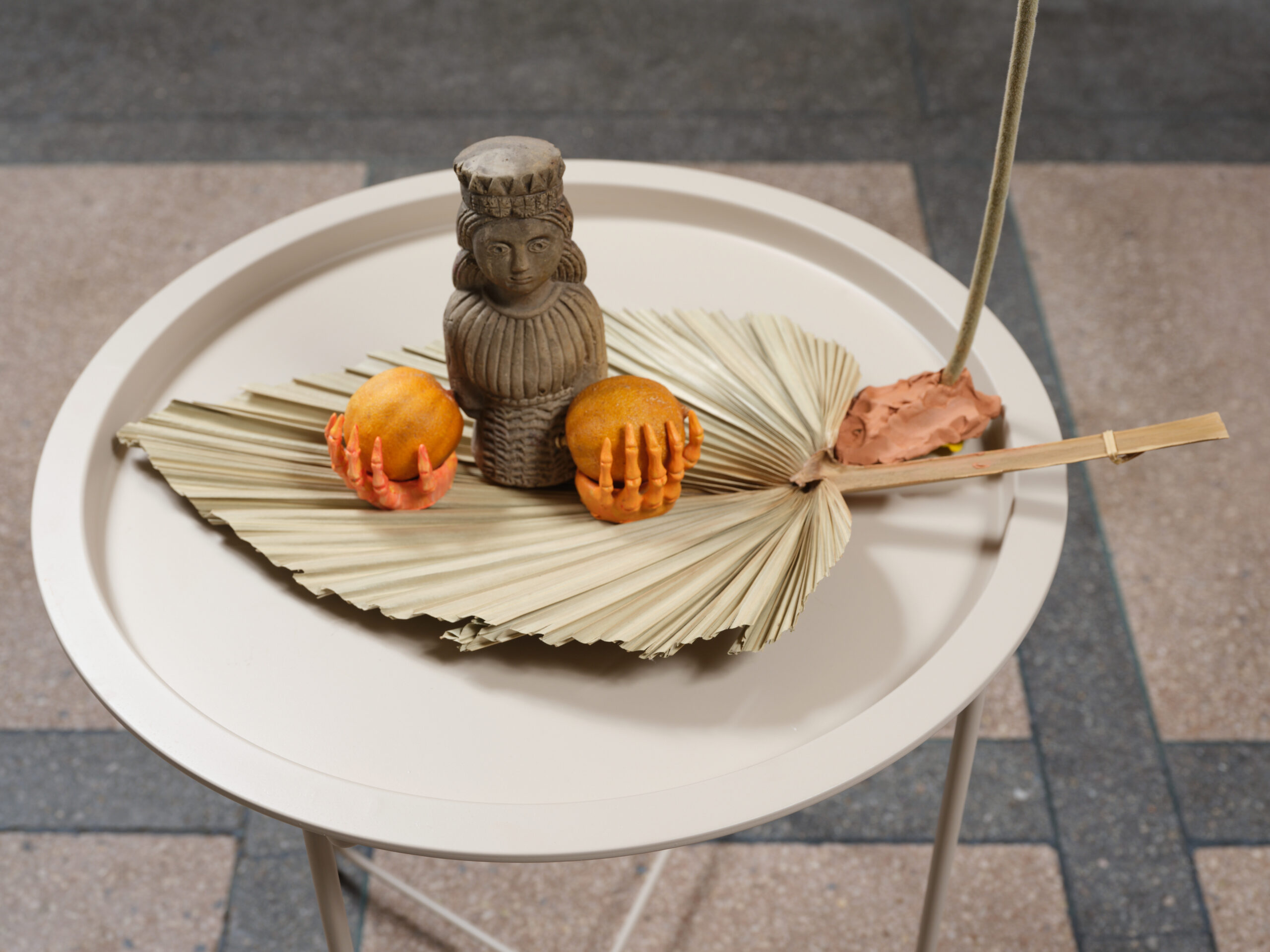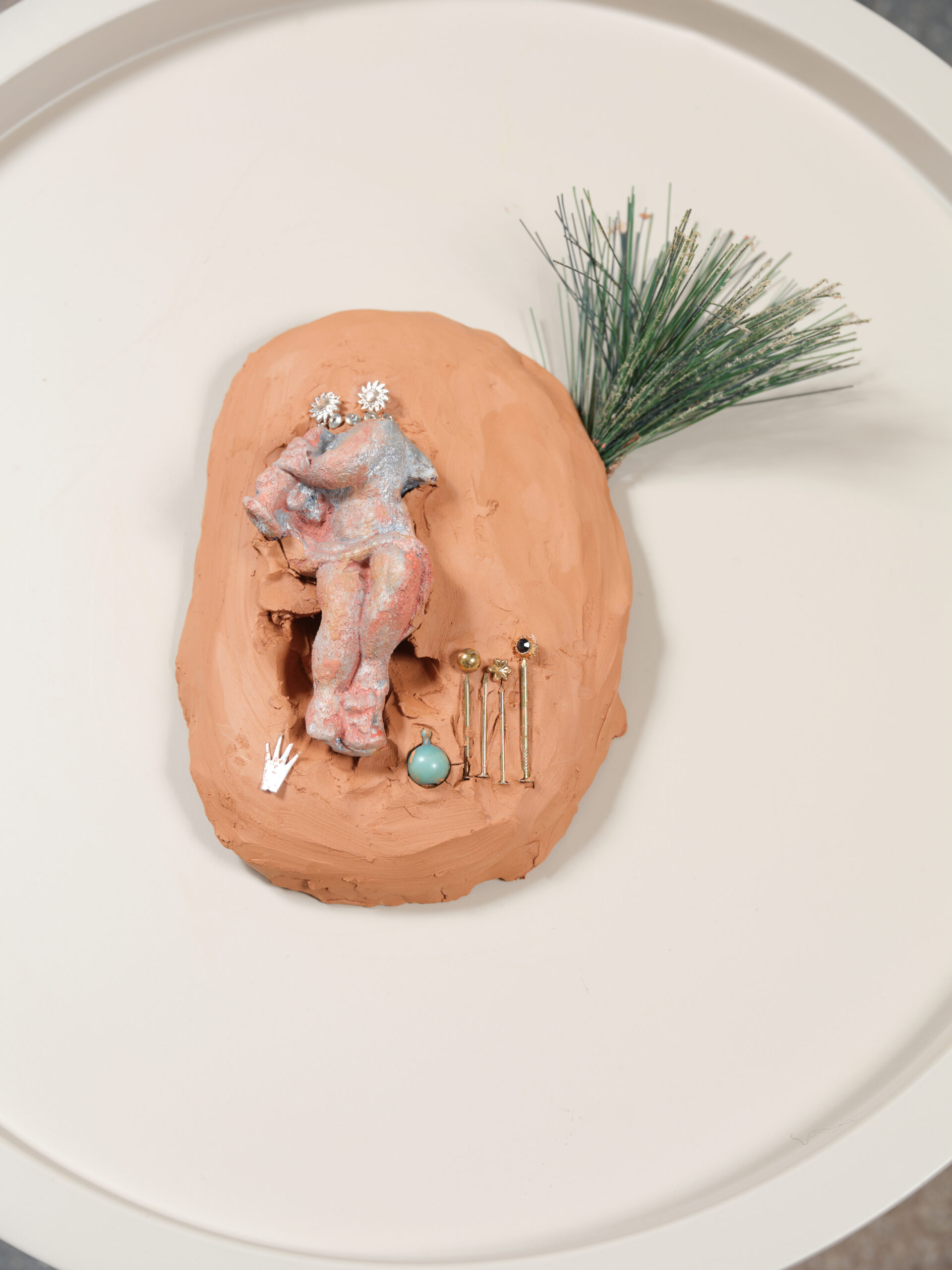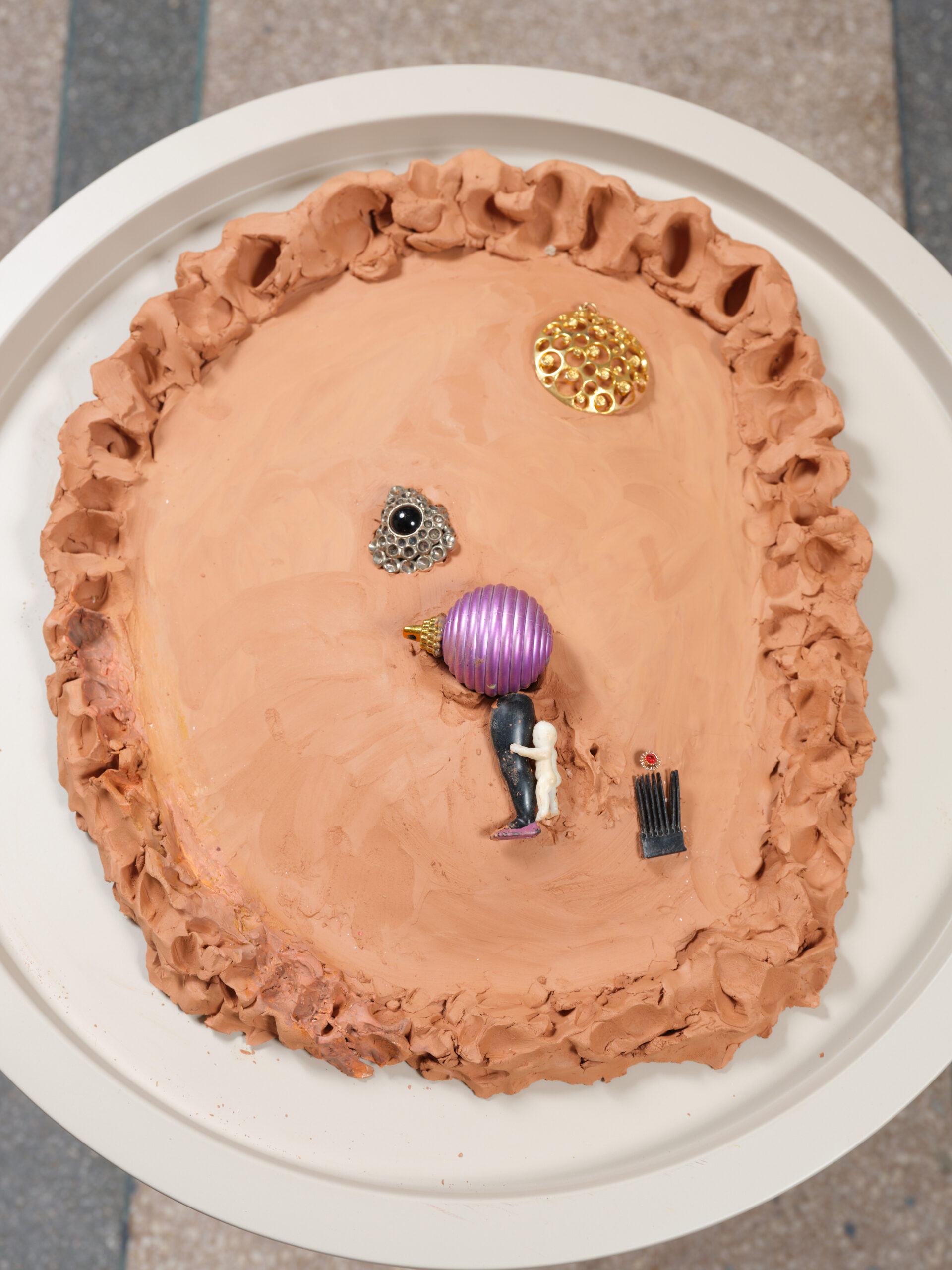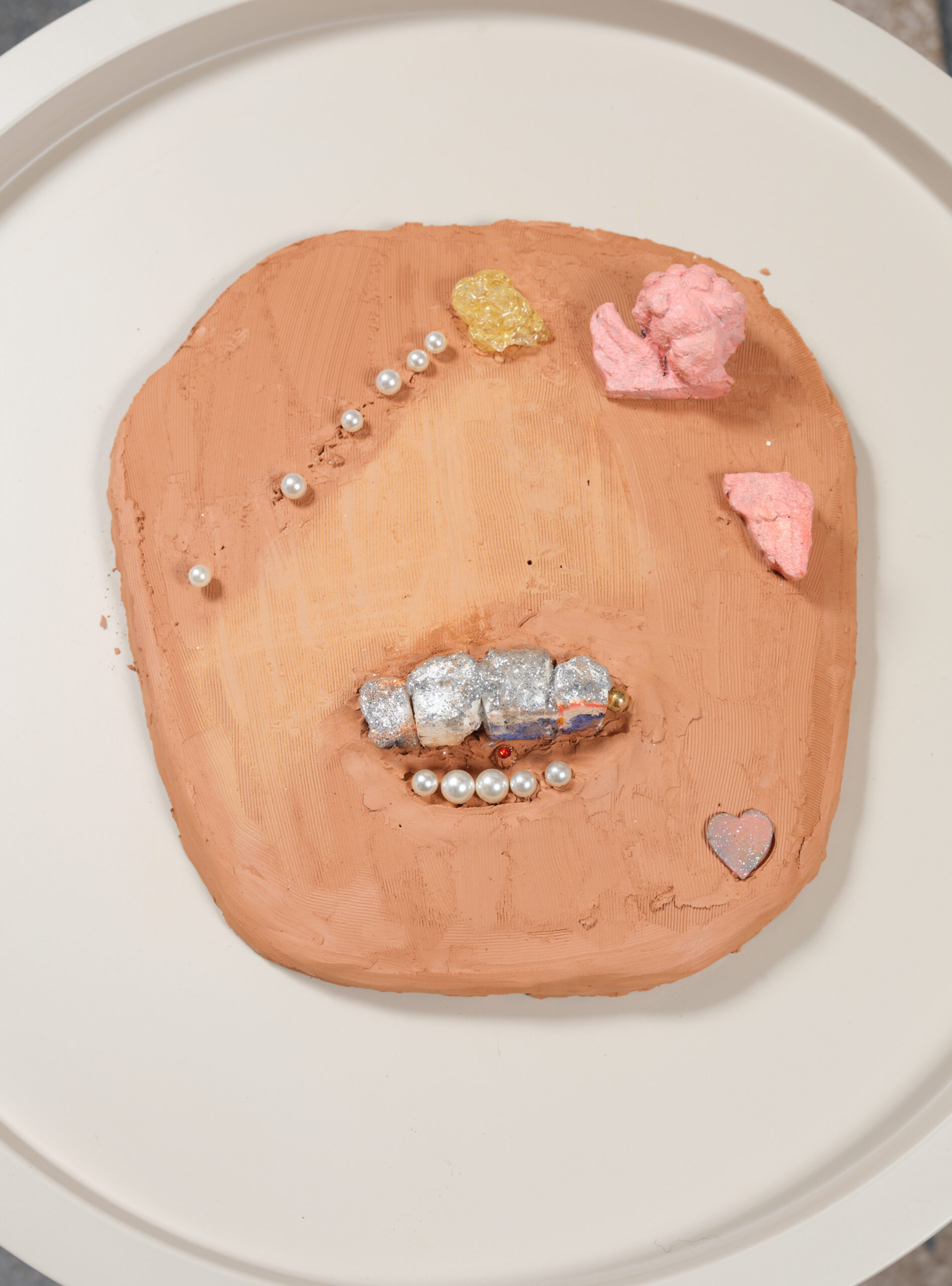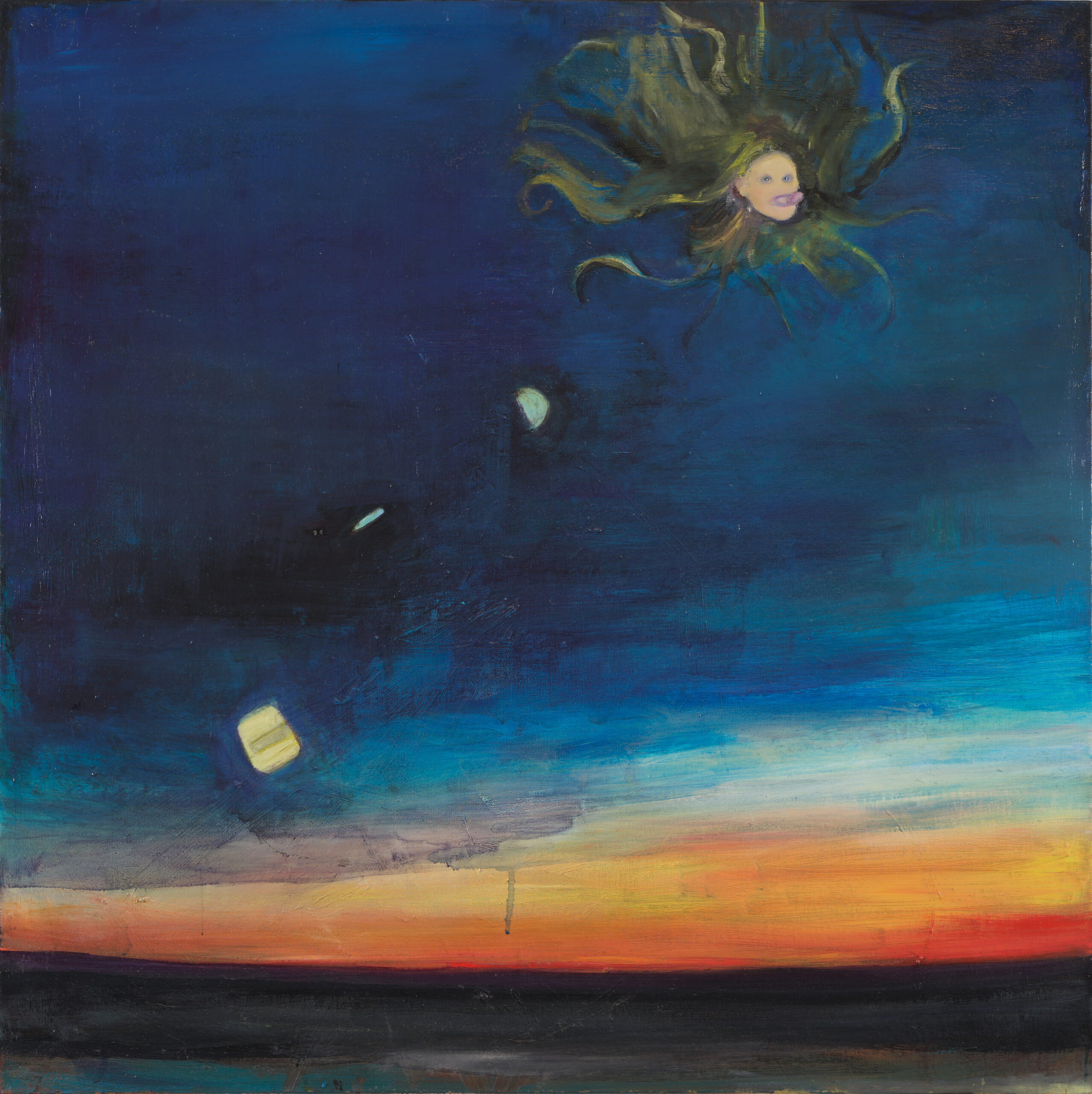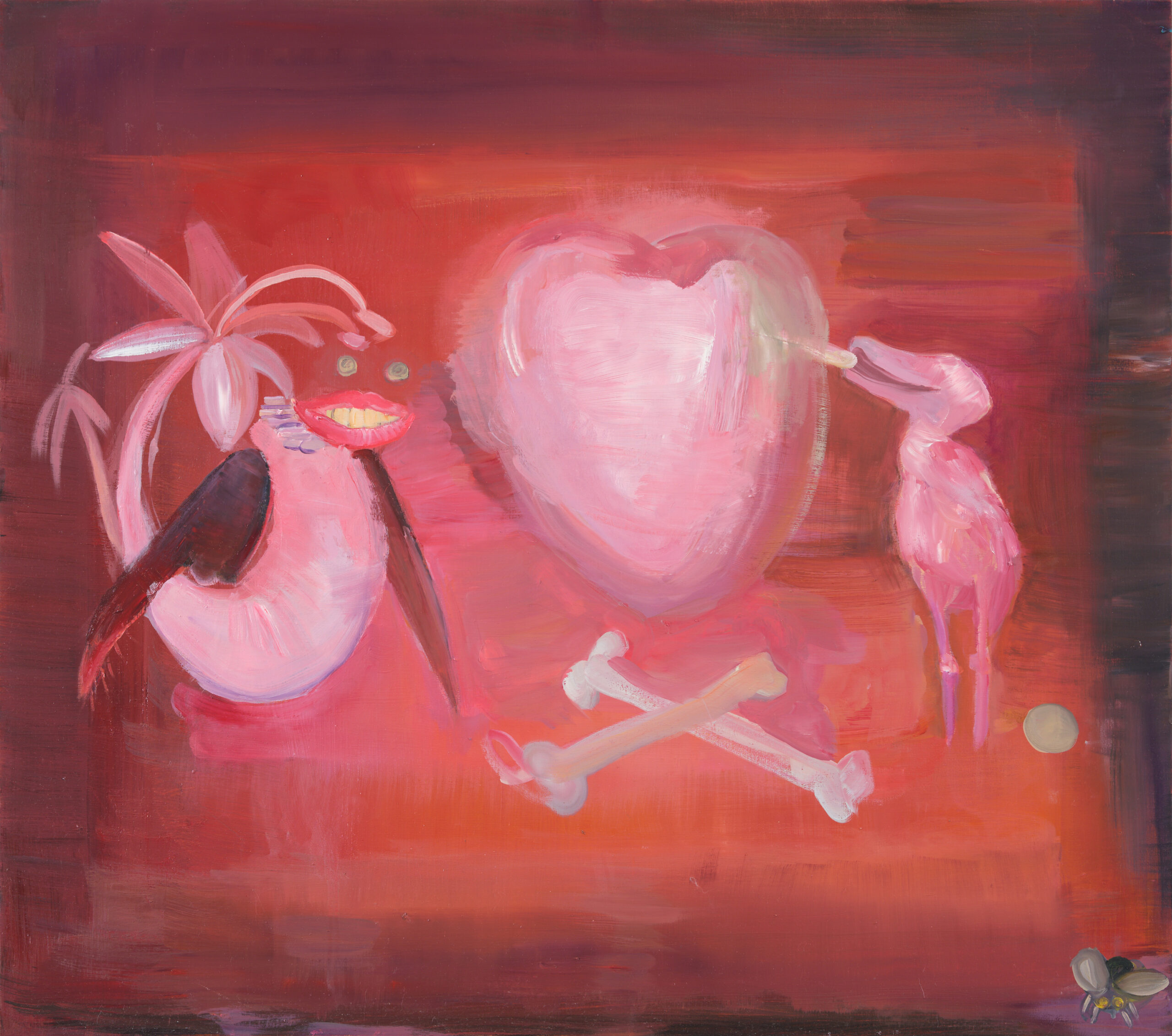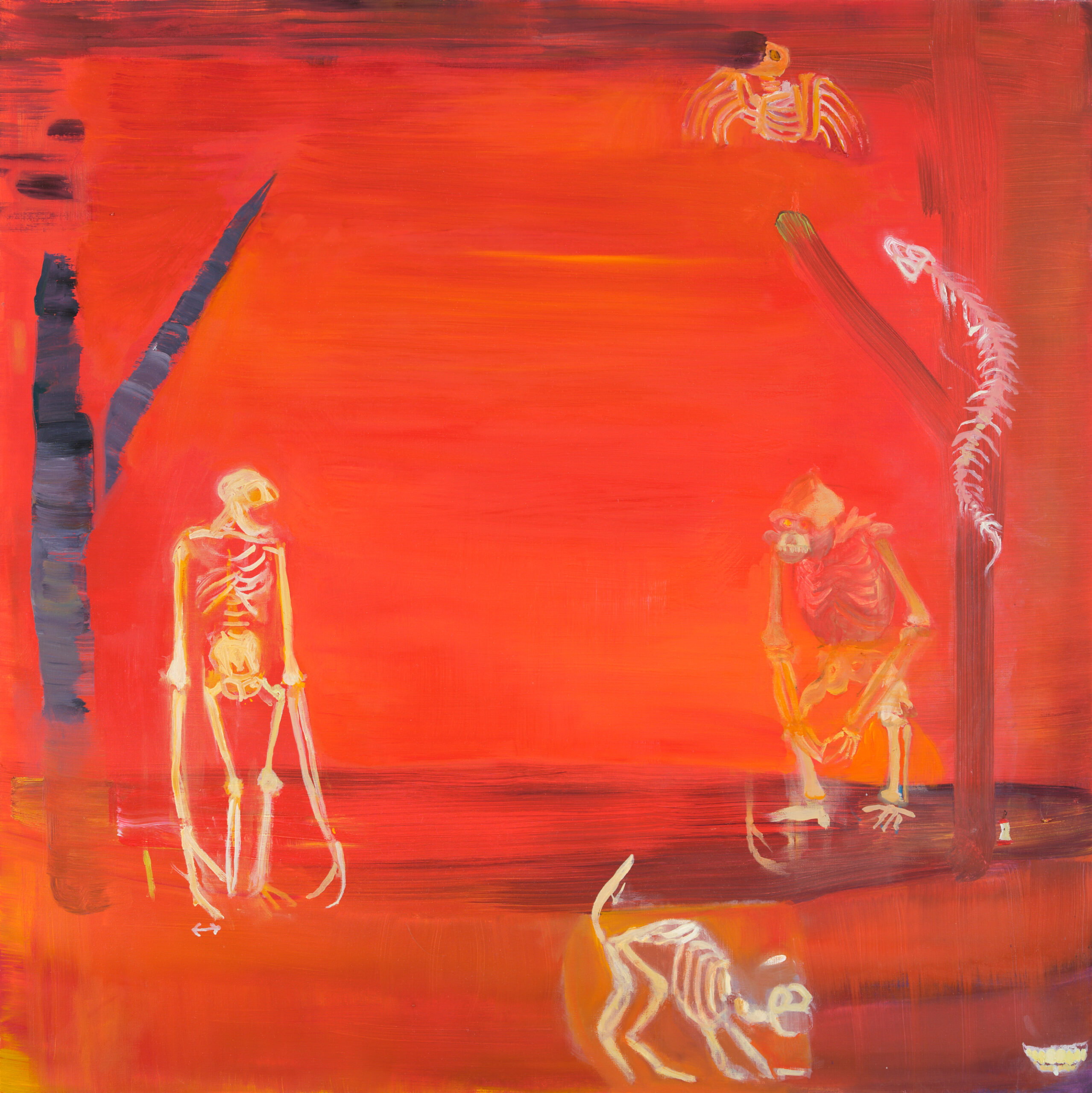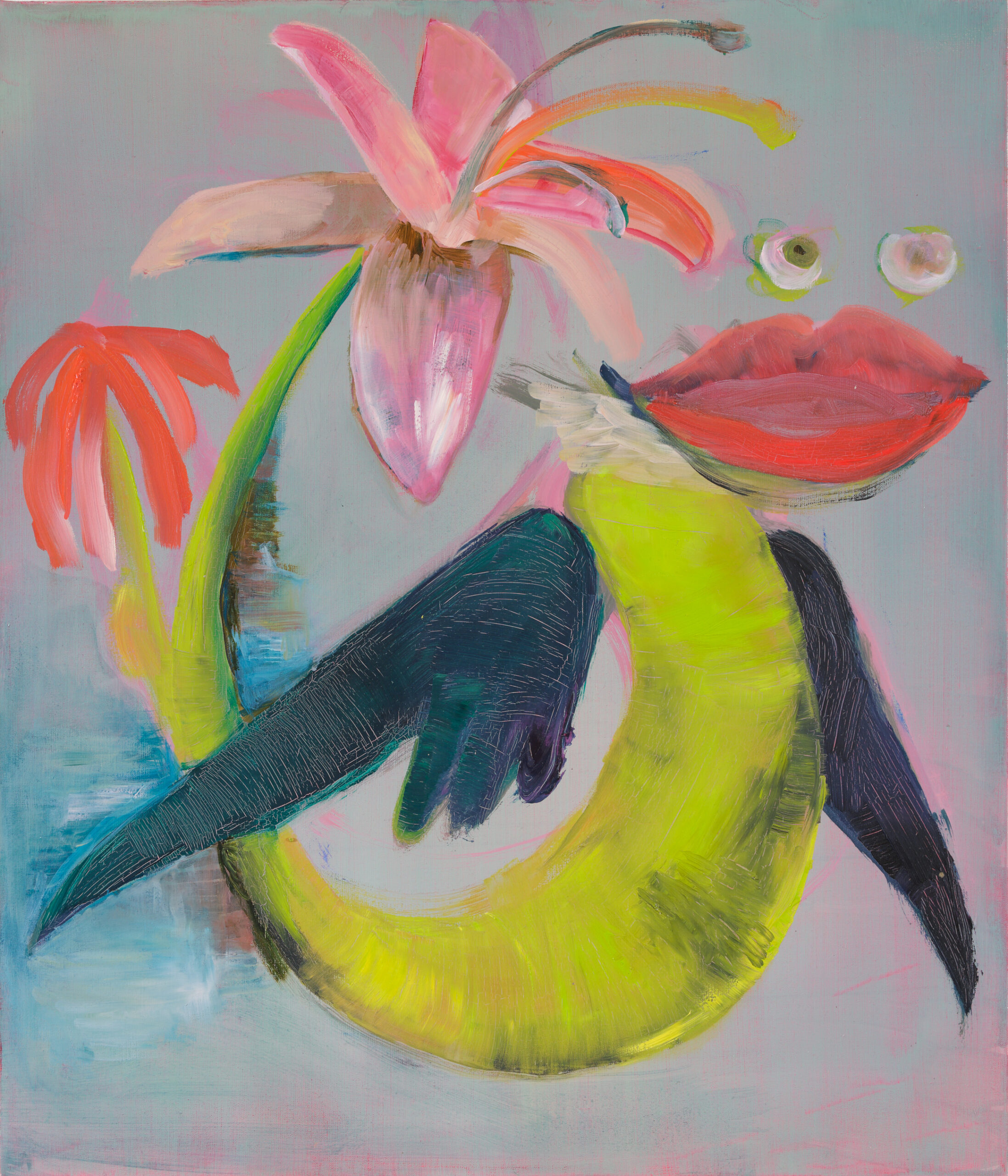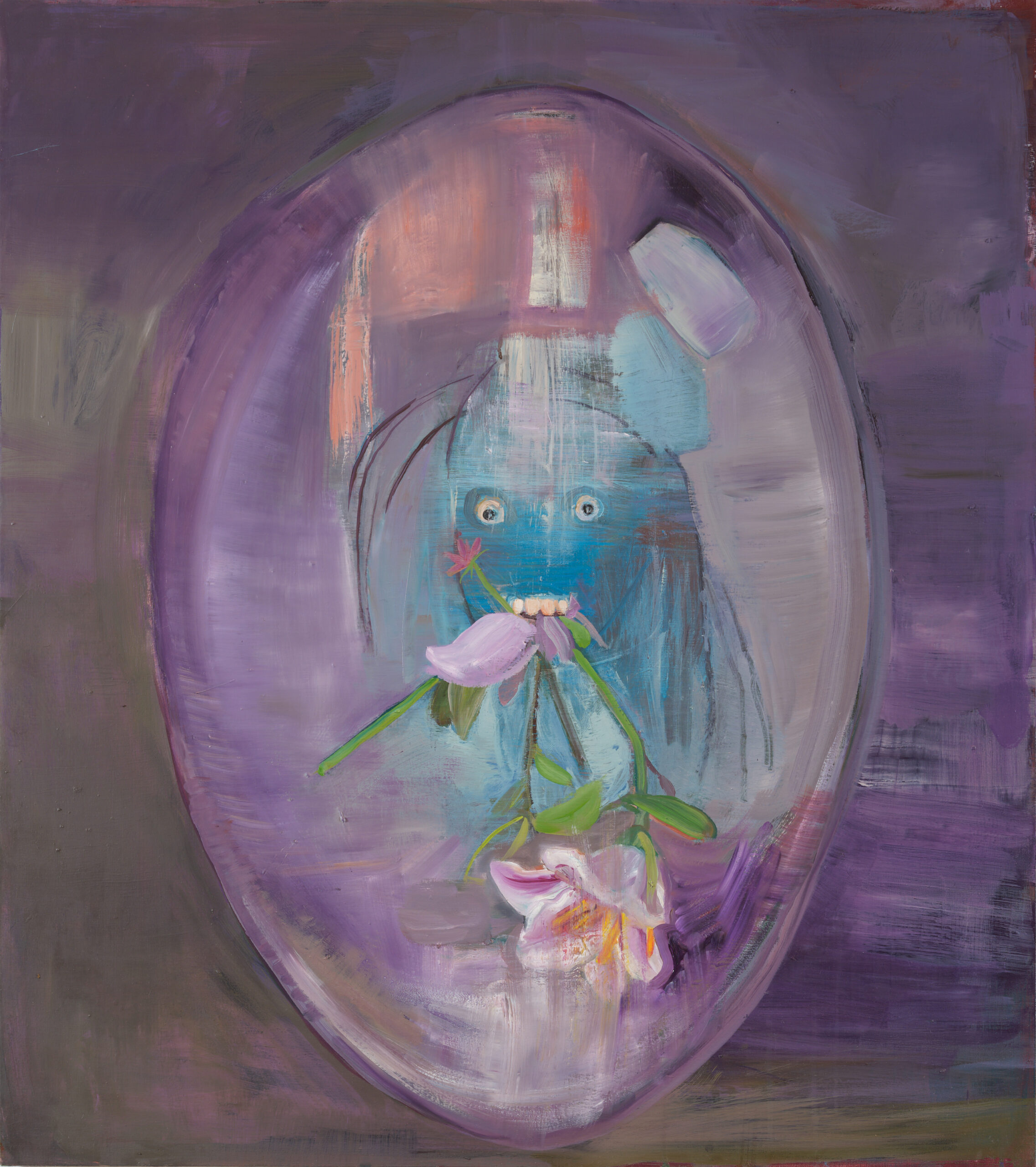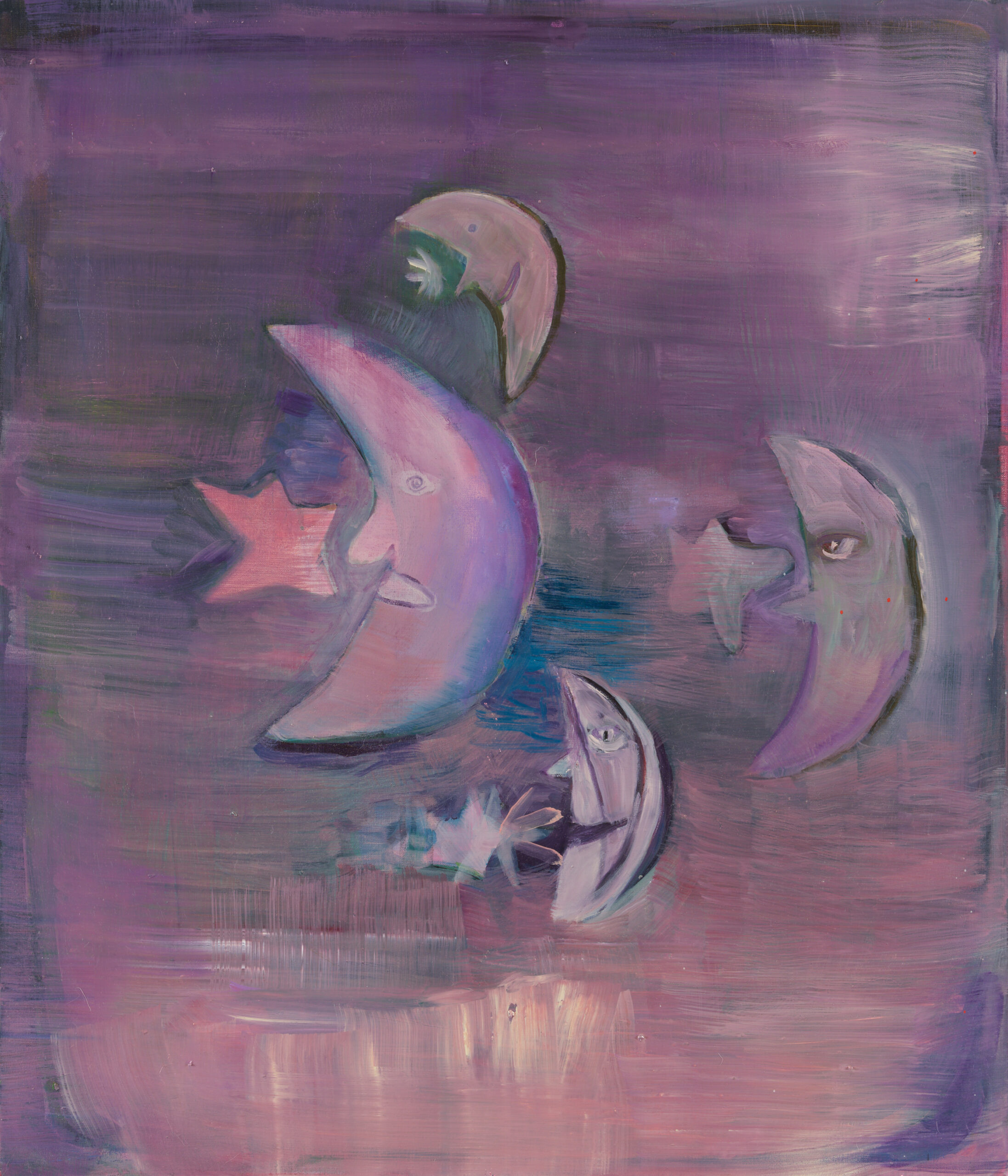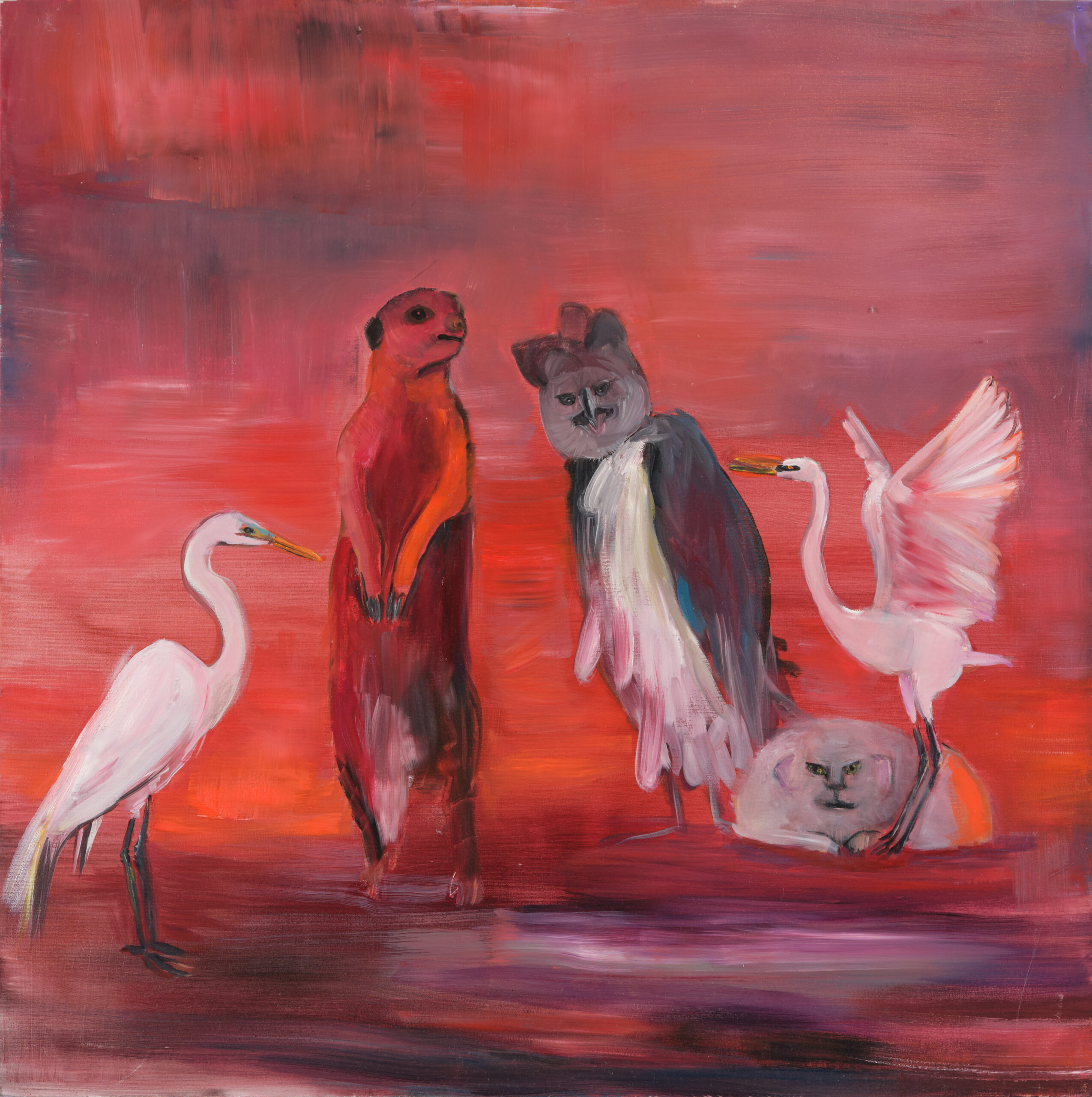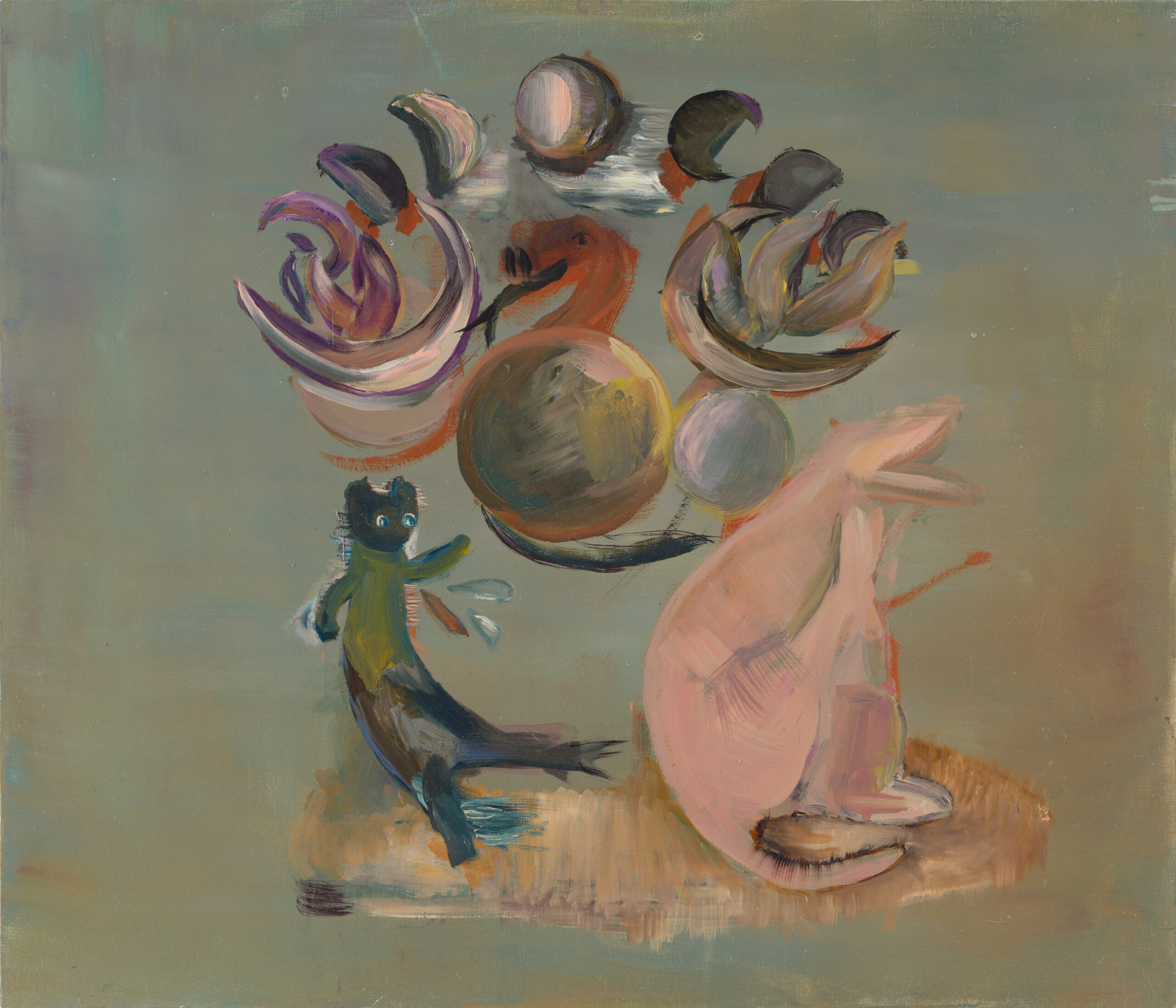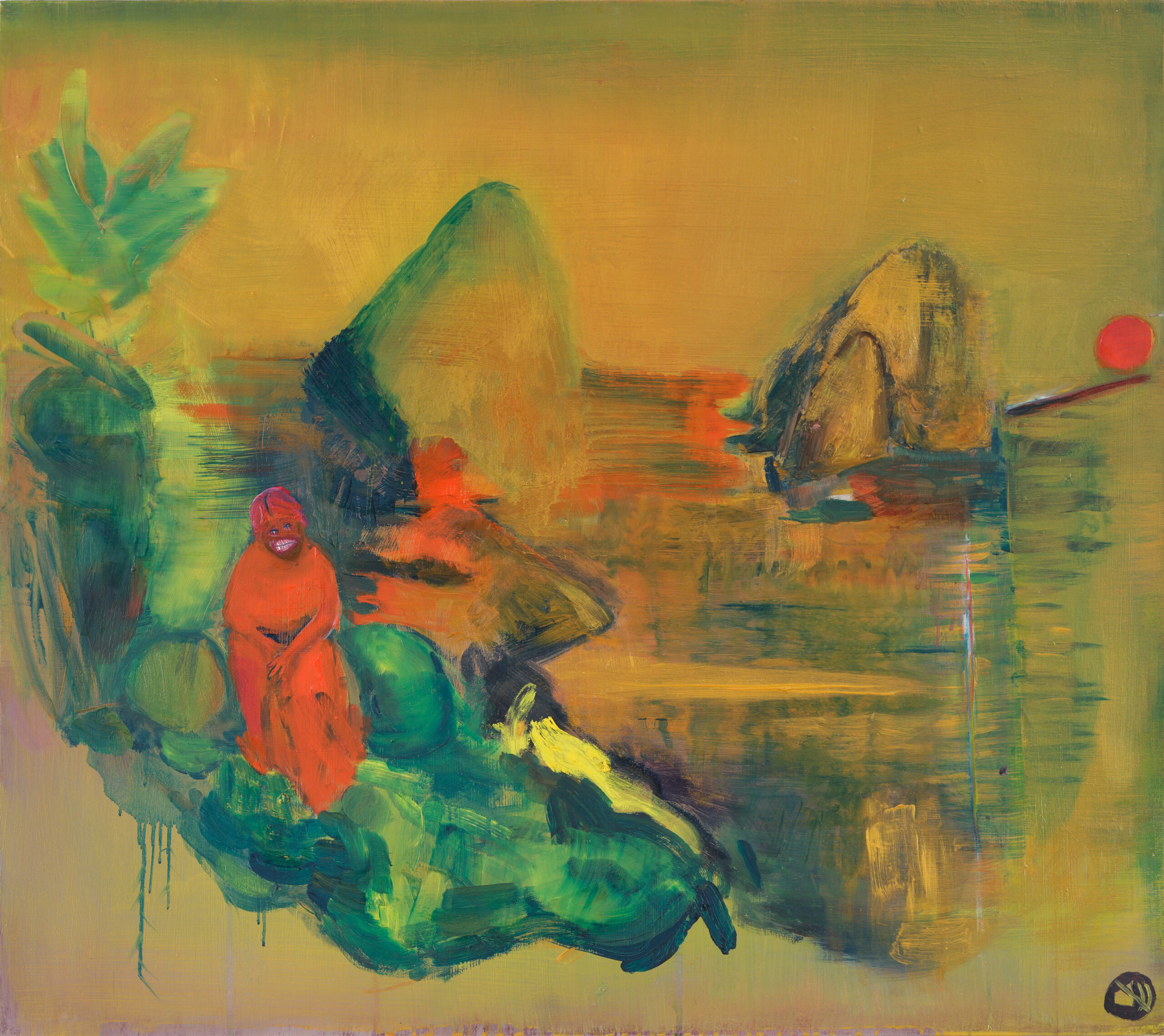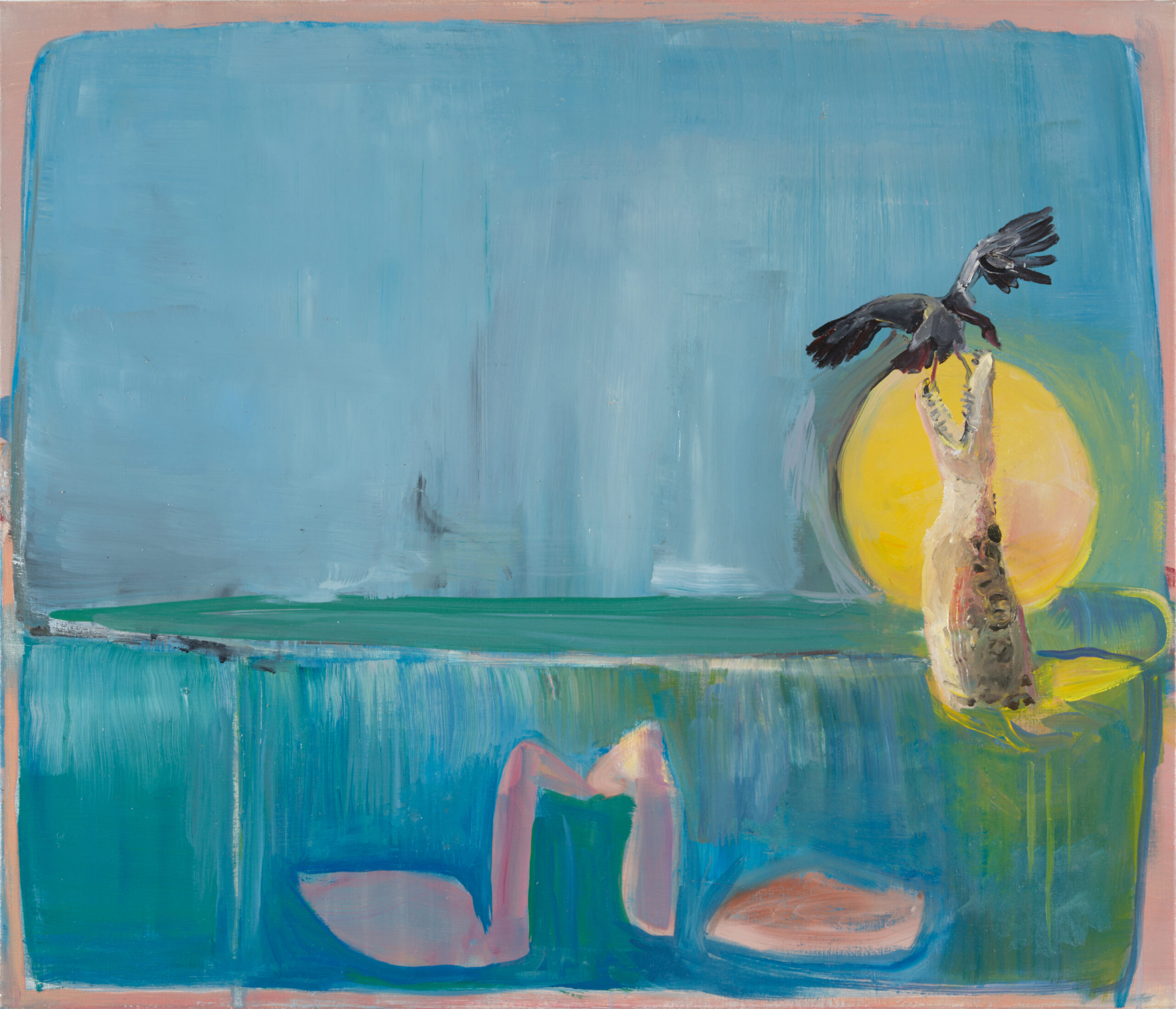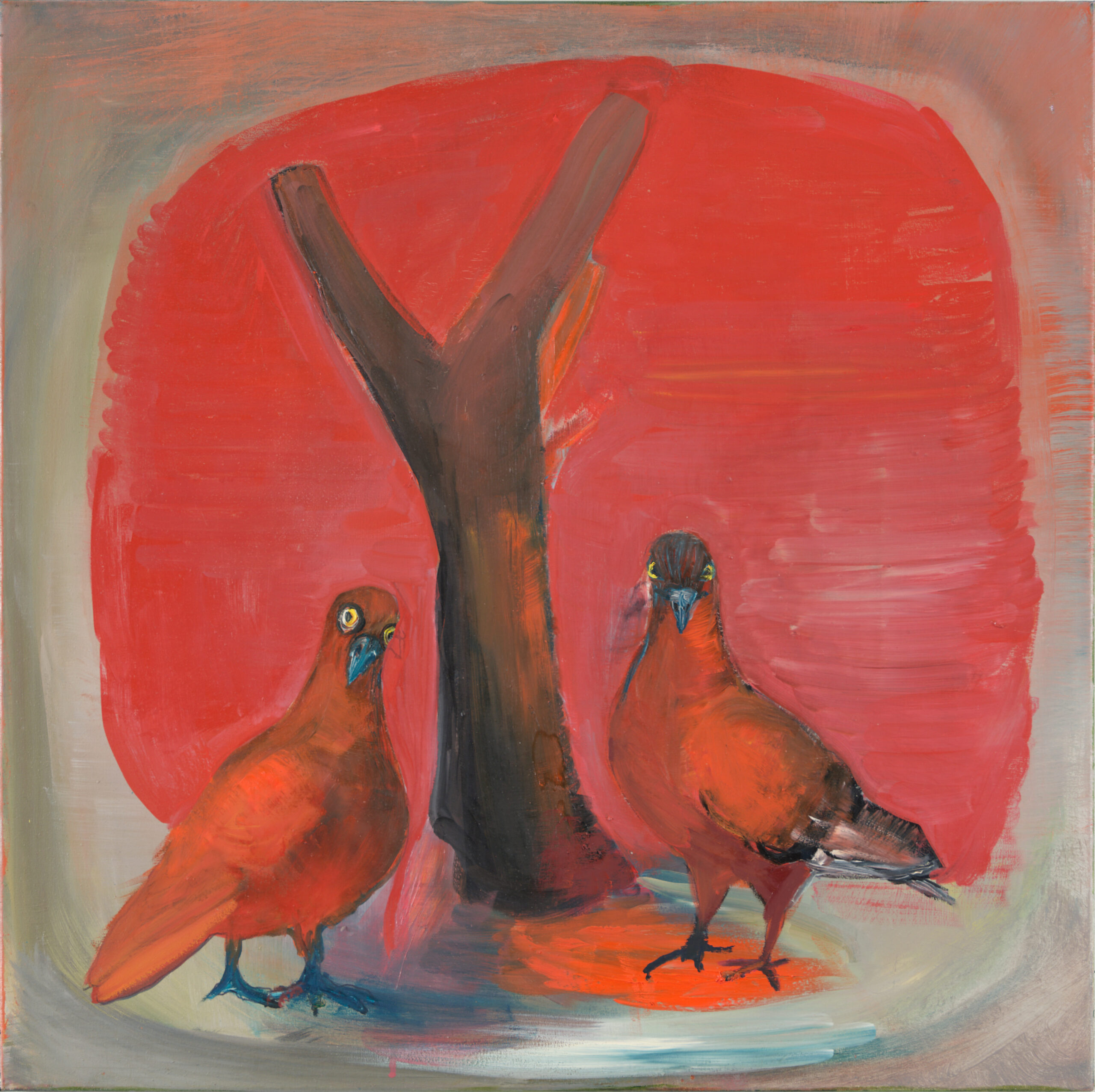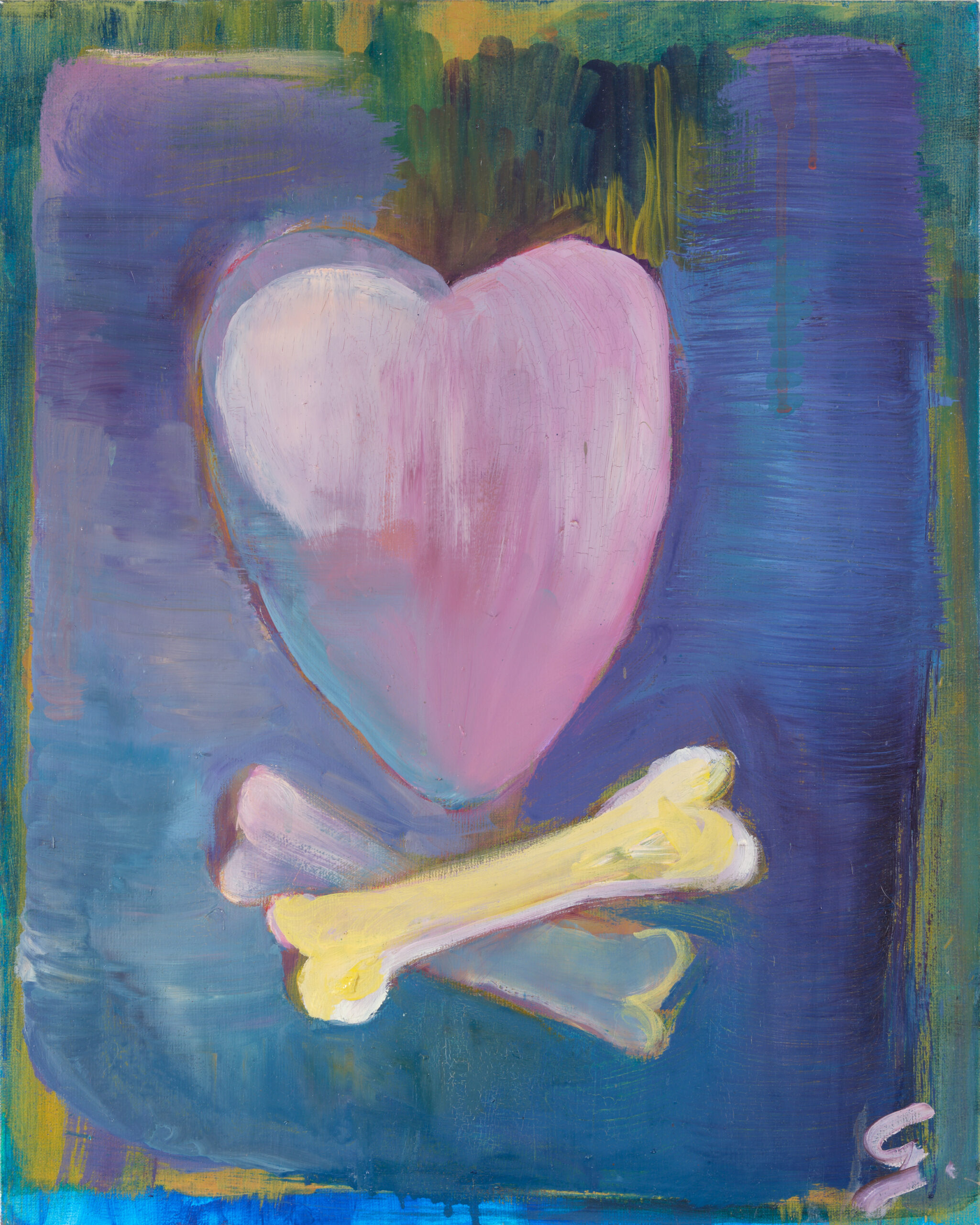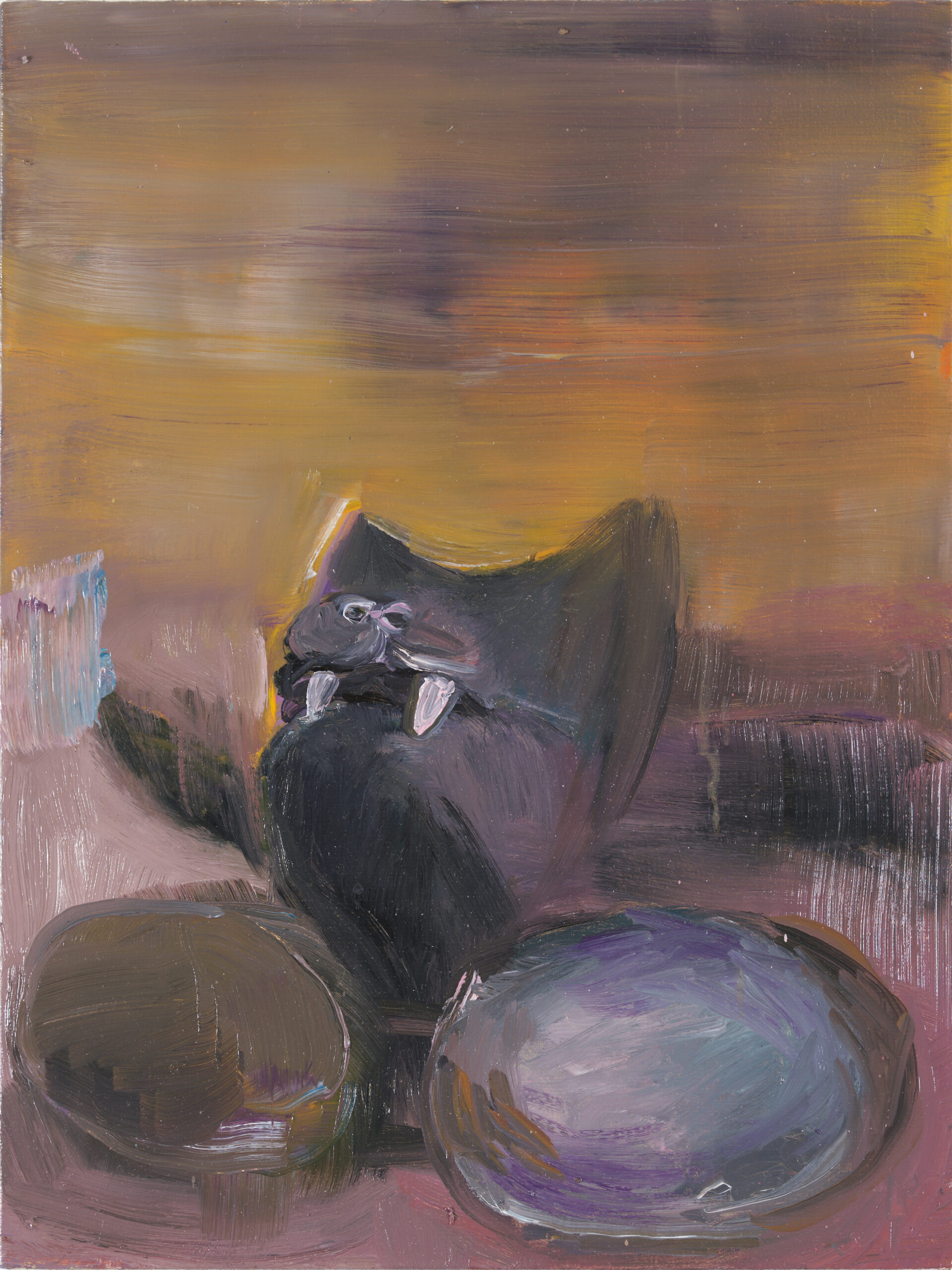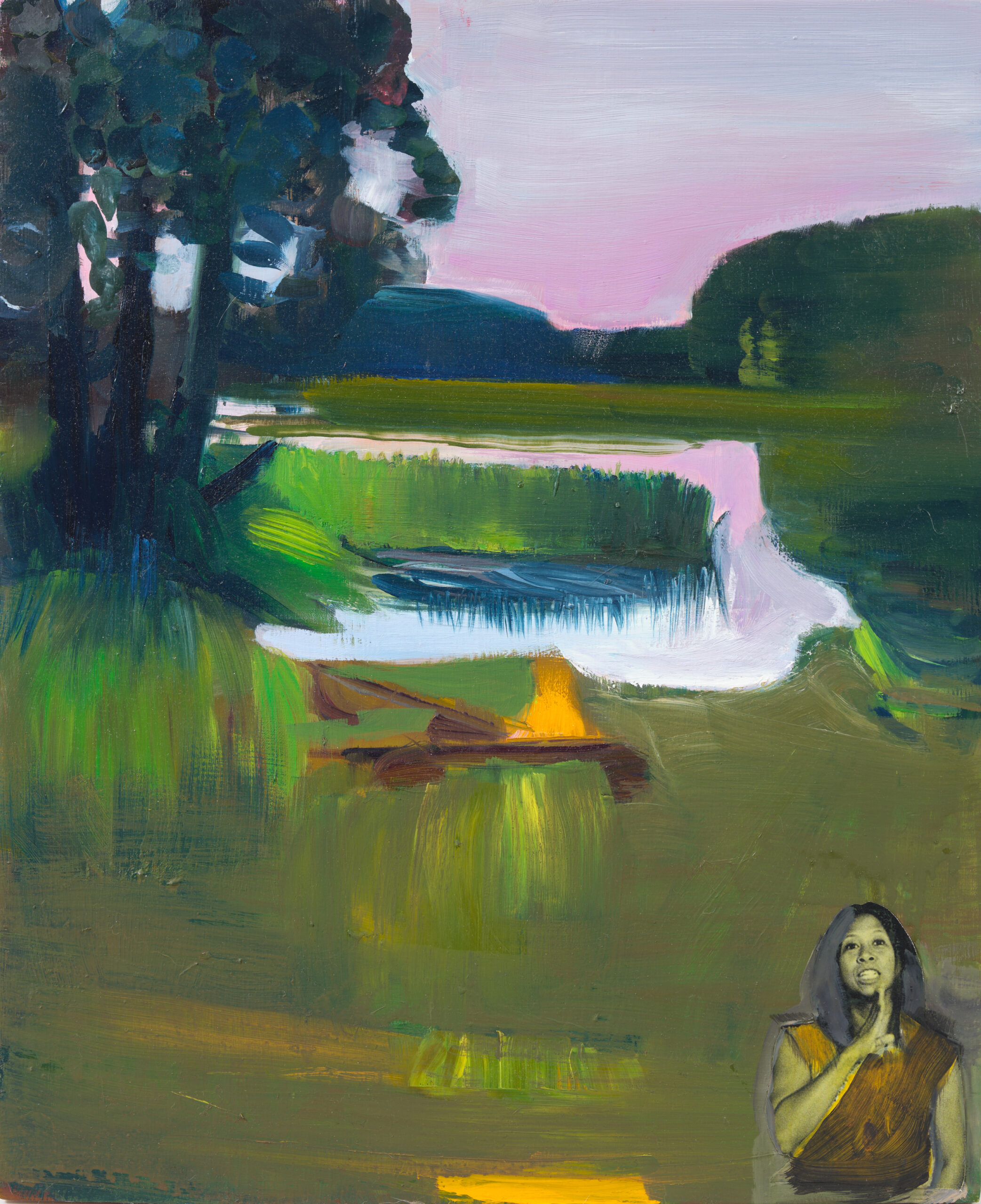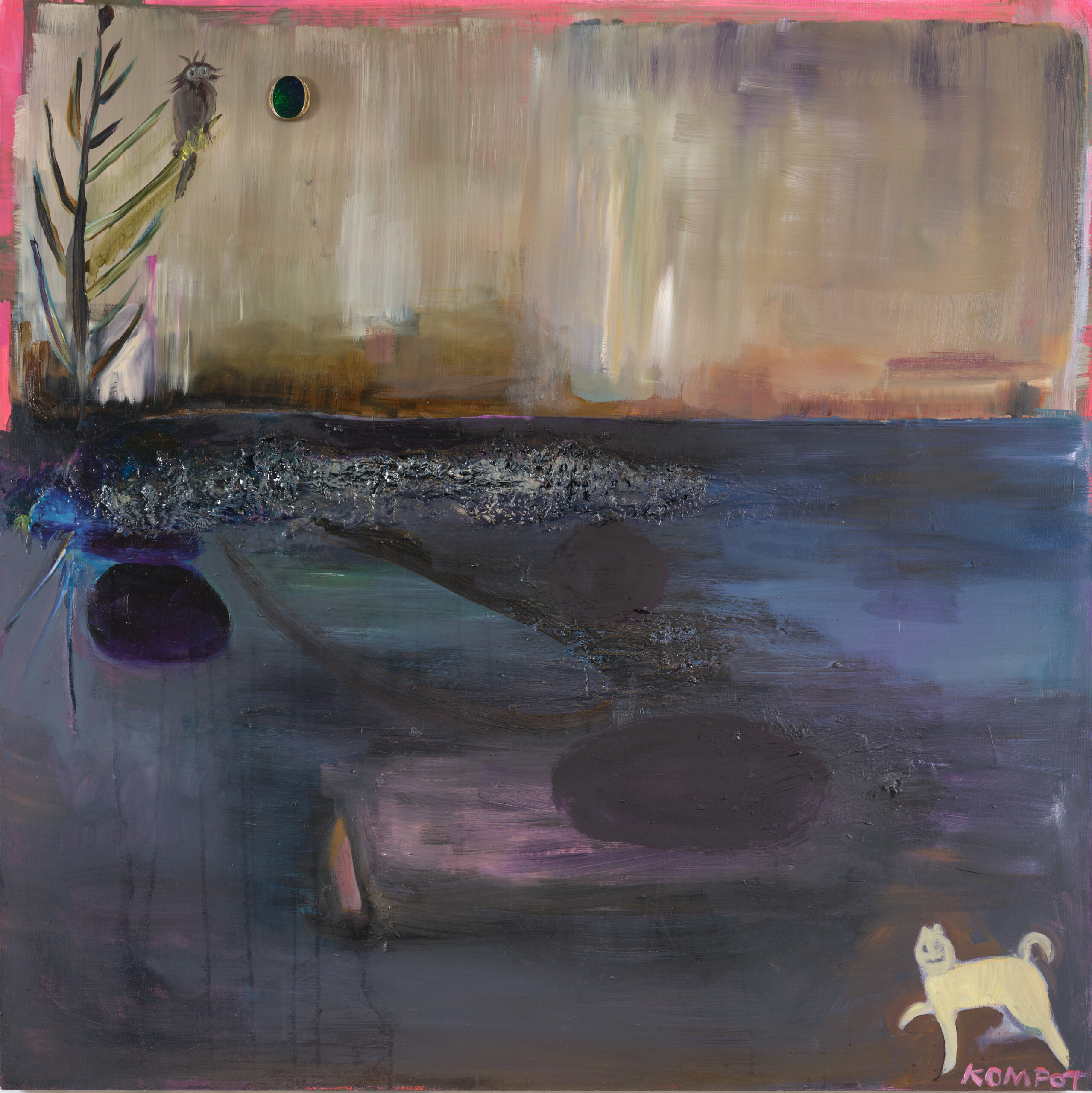Luka Woźniczko „The heart, flowers and bones”
The heart, flowers, and bones are remnants. They remain ununified, disintegrated—something here has broken apart, decayed, or perhaps been partially consumed, eaten. The world seems to be composed of fragments of various processes, which the artist’s hand reassembles according to her own rules, often reversing or mocking the original assumptions and humanity’s tendency to impose order through rigid and deadly serious regulations.
In Luka Woźniczko’s paintings, the transferred impression of depth and the potential revelation of horror is often counterbalanced by dark and veiled humor. In the painting titled Dirty Water (2024), the ominously bubbling surface of a pond or swamp is neutralized by the appearance of a small, white, smiling cat figure in the lower right corner. Animals in Woźniczko’s work often serve as carriers of a particular kind of detachment and as elements that defuse the dense and tense material of human relationships. It is also worth observing the corners of her paintings, where she often places clues to aid in their interpretation.
Luka Woźniczko’s paintings do not speak loudly. Her works are perceived as if wrapped in felt. They are surrounded by something thick and fleshy, dense and material—something that seems to muffle sound yet simultaneously compels one to listen closely and gaze into the enigmatic compositions of her paintings. The uniform, dense painterly backgrounds often suggest the depth of a body of water. In one untitled painting, we see a beautiful wetland at sunset. What lurks within it? Let’s look again at the lower right corner.
Then there are the altarpieces—another point of reference that brings us closer to understanding how the compositions of these enigmatic paintings are constructed. Irregular, sculptural, resembling the undersides of dough shaped by a child’s hands, these quasi-tondi serve as a backdrop for scenes whose meanings emerge from small objects—jewelry, holiday ornaments, hair accessories, fragments of anthropomorphic figurines. They are presented against a uniform, richly material background, as if gathered haphazardly and placed on a kitchen table. Or a plate, to be precise—after all, tondoin Italian means “plate.”
Thus, small cosmoses are formed—primordial situations giving rise to everything. The universe of the Big Bang is plasma, but perhaps it is also like dough, which rises, buds, and twists in eternal motion, revealing fragments of its underbelly—planets and stars, inorganic and organic matter—stones, minerals, primordial beings, and remnants. The heart, flowers, and bones.
